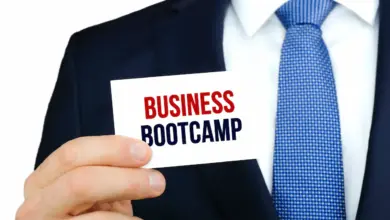A beginner’s guide to domain names
They’re often overlooked, treated as an insignificant and minor step on the path to launching an online business. Yet they have the potential to bring everything crashing down. Jonathan Crossfield unpicks the things you need to know about domain names.
content provided by netregistry
I mistype things. A lot. Never having taught me to type correctly, my fingers dart about the keyboard extremely fast, but with no efficiency. As a result, I can hit all the right letters, but not necessarily in the right order (to paraphrase Eric Morecambe).
I suspect most of you reading this have a similar approach to the keyboard: pecking away, eyes darting between the keys and the screen. If so, the following scenario will be very familiar to you.
Yesterday, I needed to visit the Apple site, as upgrading to the latest edition of iTunes had become as easy as open-heart surgery. I thought I typed Apple. Yet, the difference of only one letter caused me to end up somewhere different, where some canny but unscrupulous dealer had filled the page with links to various mp3 retailers to catch some of that misdirected iPod traffic.
It was the poor brand imitation of the copycat site and my familiarity with the official Apple online store that alerted me to the mistake. But consider if this happened with your brand. Would a first-time visitor know they were in the wrong place if someone built a copycat website using a similar name and promoting similar products? Could another business gain some of your traffic – and sales – by virtue of a similar domain name? Could a poorly branded and spammy website, just a single letter away from your genuine site, damage your online reputation?
That is just one of the issues online businesses face when selecting domain names.
“But that’s MY business name!”
When choosing domains, the first instinct is to simply look up your business name and grab it. Yet, with millions of domains registered around the world, many business owners may find their ideal domain name has already been taken by someone else.
You may have the business registration for Jeremy’s Pies in Australia, but someone else may have the same rights in other territories. The problem is increased by the number of business names that reference common products and titles. For example, someone else called Jeremy has a pie business in the UK, and in such a populated world, this is more likely than you think.
To illustrate, each name I chose for this fictional business turned out to actually exist when I performed a Google search. Every new name I placed in front of ‘Pies’ revealed a number of businesses with the same or similar name – thereby illustrating perfectly the challenges of choosing a distinctive domain.
As an Australian business, you may be content to only have the .au domain for your brand. But should your business ever want to expand into international territories, the inability to register the relevant domains in other countries may present problems.
Conflicting domains can also cause customer confusion. How many customers will visit the .com name instead of your .com.au and give their business unaware of the mix-up?
This is why many online businesses are choosing to use new words (or distortions of words) as their trademark and domain: Google, Zappos, Mashable, and so on.
By the time most people start thinking about which domains they would like to register, their business name is already decided, resulting in compromise. However, it is more advisable to consider and search for domain names when deciding on and registering your business name. The domain search is now quite a common part of those initial discussions to ensure the brand is differentiated sufficiently from others and all the appropriate domains are available.
If you are one of the majority of businesses that don’t consider a domain until much later, you may need to weigh up a few considerations:
- Are there similar brand names that already exist on the web?
- Is there a risk of confusion should a visitor arrive on the wrong site?
- Can a variation be found that is available in all key territories? (For example, jeremyspiesonline.com instead of jeremyspies.com.)
- Is there a risk of misspelling the domain and are those names also available for you to register and safeguard?
There will not be any black and white answer to how to deal with these issues, should they arise. A business needs to consider the impact of each of these factors and develop compromises that allow the strongest domain strategy to protect and spread the brand.
Keeping control over domains
It is a sad day when Sally resigns from Jeremy’s Pies, but it is a few months before you realize just how badly the business will miss her. If Sally was in charge of registering your domain names, what email address and details did she use? Important emails regarding domain renewals aren’t coming to you but to someone who no longer works for you. Changes you may want to make to the administration of the domains can’t be done because, without Sally, you don’t have access. The provider can’t help you because you’re not the listed person responsible for the domain.
It is not unheard of for a business to lose their domains completely when they expire because the details used to register them are no longer correct. Worse still, a disgruntled ex-employee with the keys to your domains can restrict access and make it extremely difficult for you to regain control by refusing to transfer the registration to you.
Control of a domain is dictated by the details attached to the account, stored in the WHOIS database. This database records the person or entity with responsibility for every domain, along with their contact details, and should always be kept up to date and accurate. If Sally is listed as the owner of jeremys-pies.com.au and Sally’s email is given as the contact, then Sally controls the domain whether she continues working for you or not.
When registering domains for a business, it is imperative you ensure that the email address used will always remain under your control and that the administrative details are yours.
Dealing with cybersquatters
Another scenario – thankfully less common these days – is discovering that someone has nabbed one of your related domains for the purpose of extracting a higher price from you or to pass themselves off as related to your brand.
Cybersquatting is more difficult in Australia. This is because all .com.au names require a valid ABN number and the applicant must warrant that the domain, including how it will be used, will not infringe on any third-party rights. Other domains have different restrictions governing registration to lessen the risk of control being handed to those without a legitimate interest in the domain.
It is possible to legally challenge the registration of the domain if it infringes on your registered trademark or breaches the above rights. If proven, the domain may be deregistered so that you may take control. Yet not all small business names are registered trademarks, which may make it harder to establish a legitimate claim.
However, not all those who may register a domain you want can be considered cybersquatters. If the person has a legitimate claim to that domain – such as a similar business name or product line – and isn’t infringing a registered trademark, you may need to move on.
In all cases, prevention is better than cure. The best way to avoid squatters – or competitors – sitting on the perfect domains for your brand is to register them first.
It will most likely be a lot cheaper in the long run.
Trading domains
Not all domains are tied down in trademarks and legitimate interests. Some are of interest to a wide range of people and therefore are far more valuable than the registration price. Sure, it may only have cost you $44.95 for a two-year registration, but it may be worth hundreds or even thousands to someone else with the right idea.
If you end up with domains that you no longer have a use for, rather than let them run out the clock and expire, you can turn them into valuable assets with the domain name aftermarket. This allows you to sell the rights to a domain for whatever price you and a customer can agree upon and then arrange the transfer.
For years, .au domains were left out from the domain aftermarket as transfers were highly restricted. However, the Australian Domain name Authority (auDA) relaxed these conditions in 2008, allowing Aussie domain owners to finally extract a true value from these important assets.
This has led to sites such as Netfleet.com.au enabling Australian domainers to buy and sell domains at prices set by the market. Recently, key domains such as boxing.com.au and jeweller.com.au have been sold through the site. Again, you need to weigh up the value such a domain could bring to your business against the asking price – for a jewelry store or a boxing gym, the domains could provide huge amounts of traffic to the website.
Every day, hundreds of domains expire. Why not sell them through Netfleet and see how much you can get? Even if it only achieves its registration cost back, it has paid for itself.
Tactics for better domains
Domain names may seem an insignificant and minor part of your online strategy – particularly when you have a website and marketing strategies to plan. But unplug that domain and nothing else works. It is the cornerstone of your online business and you need to plan and consider your domains carefully. Here are some useful tactics:
- Register multiple domains;
- Distinguish your domains from the competition;
- Consider ease of memory, misspellings and typos;
- Avoid administrative mistakes that can lose you control;
- Trademark your business name; and
- Trade surplus domains for a profit instead of letting them lapse.
###
What’s in a (domain) name? URLs
When the internet was in the early stages, websites were accessed by entering their IP Addresses. These were simply strings of numbers used to identify the host server on which the data was stored. As the internet grew, IP Addresses became impractical as they were not easy to remember – imagine having to remember a phone number for every webpage you visited. Therefore, the URL was created. URL stands for Uniform Resource Locator and forms the entire address used to access a particular website, including the domain name. By using words and letters to replace the impractical IP Address method, URLs became descriptive and therefore far more relevant. The URL for the Netregistry website is ‘http://www.netregistry.com.au’, containing the Hypertext Transfer Protocol (HTTP) – allowing you to use words instead of an IP Address – and the domain name itself (www.netregistry.com.au), pointing to the server and the particular files to be accessed.
How many domains?
So you go ahead and instruct your assistant Sally to register jeremyspies.com.au. Sally points out that the domain can be misread as Jeremy Spies, suggesting you may have a weird and suggestive pastime. Back Sally goes to register jeremys-pies.com.au instead.
The first domain isn’t wasted. It is simple to redirect it to point to the same website so people who forget the hyphen are not left staring at an error message.
OK, so you’ve made the domain less ambiguous, you’ve checked no one else has jeremys-pies.com and the other related domains (.net, .co, .uk, etc). Can you relax now?
The only way to prevent another pie-maker named Jeremy from coming along and registering those other domains is to register them first. Even if you are the only pie-making Jeremy on the planet, others may decide to profit from your online success by taking those domains you haven’t already registered. They might try to charge you a premium to transfer them to you or load the page with advertising and links that earn them money when people mistakenly land there, as the Apple typo domain has done.
You may never use these additional domains or you may choose to redirect them to your website, but by registering these domains, you protect the brand from others deliberately or accidentally grabbing them and creating confusion.
###
Domains from Netregistry
Netregistry is the largest provider of .au domains and has long been trusted by small businesses. The .com.au domains are only $44.95 but come with hundreds of dollars in value.
Registering a domain with Netregistry comes with the following extras:
- Six-month subscription to Nett magazine;
- Discounts with Netregistry partners;
- Weekly newsletters with extra business advice; and
- Free three-month hosting trial.
Register your ideal domains today at Netregistry.com.au before someone else does.
Recent domain sales on Net Fleet
- Autosell.com.au $800
- boxing.com.au $3800
- Finance-jobs.com.au $150
- jeweller.com.au $14767
- Mower.com.au $525
- mortgage.net.au $13500
- Iced.com.au $450
- freestuff.com.au $18700
- Commission.com.au $1200
- onlineperfumes.com.au $1600
- Myrealestate.com.au $6000
- domestic.com.au $1500
- Crazy.com.au $1000
- Airfare.net.au $150
- Barcourses.com.au $2000
- Tours.net.au $1500






